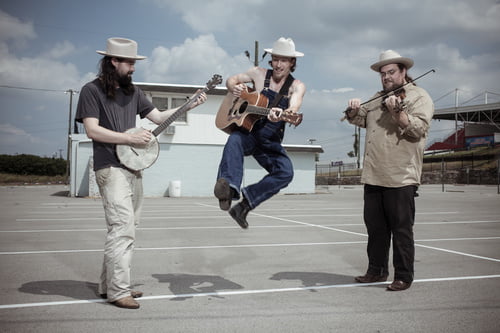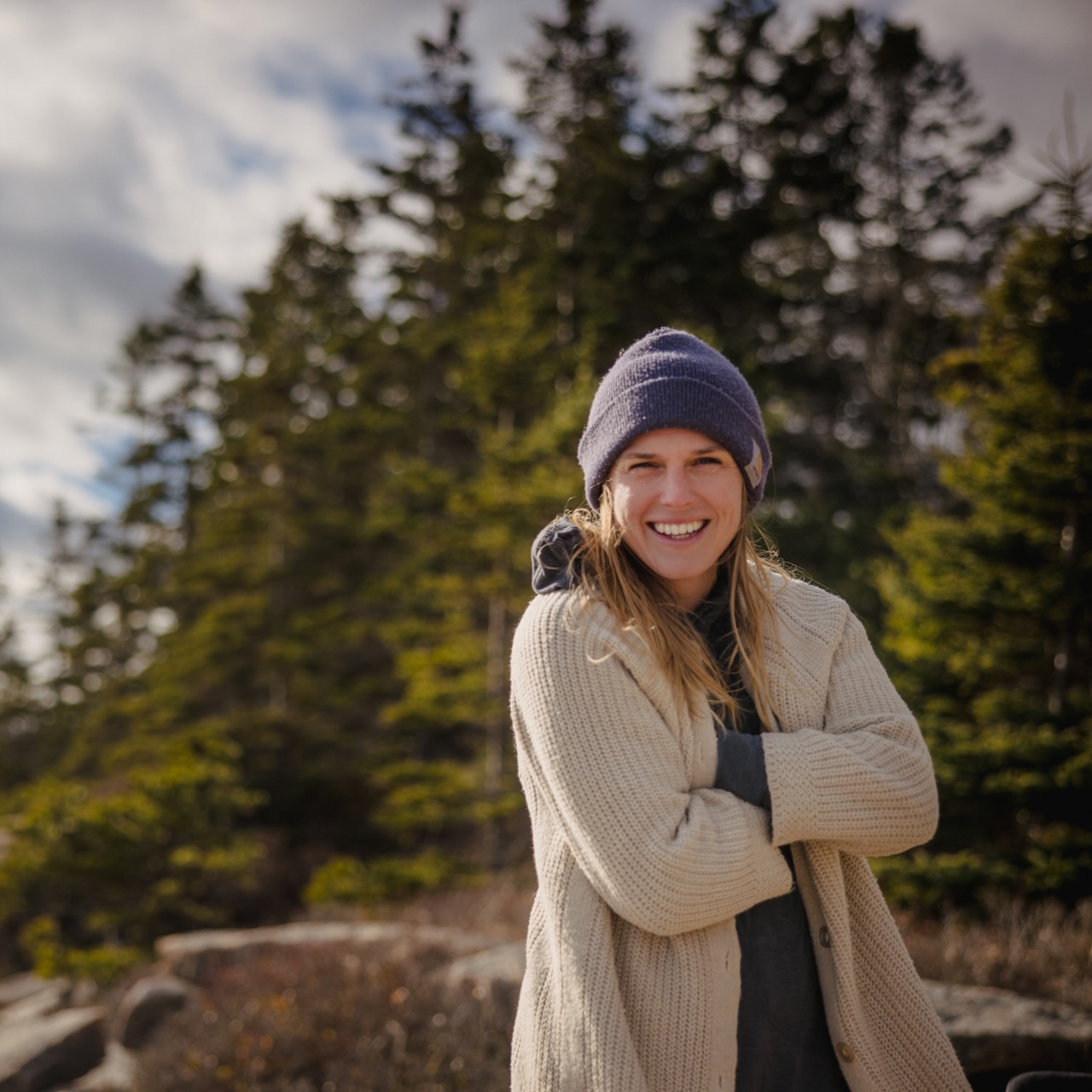Sierra Hull has a well-established reputation as one of the most talented mandolin players and multi-instrumentalists of her generation, and her gripping new album, 25 Trips, is a look at her life as a musician in her mid-twenties.
The lyrics examine the changes she’s experienced in the past few years, such as getting married or watching loved ones age, as well as the attempt to process these changes in real-time. Meanwhile, she reflects the experimentation of her live show with electric guitar, drums, and synths — instruments not commonly associated with someone who’s won three awards for IBMA Mandolin Player of the Year, which she won consecutively after her most recent prior album, 2016’s Weighted Mind.
“What ultimately ended up being really fun about making this record is that it embraces the things that I like about creating music from multiple angles,” she says of 25 Trips. For the first time Hull enlisted producer Shani Gandhi, who helped shape the album’s diverse production styles — from stripped down tracks with just guitar and vocals, to familiar bluegrass arrangements, to songs with fuller production than those found on her first four albums.
Just before beginning her most recent tour, she spoke to BGS by phone from her home in Tennessee.
BGS: Your albums have often showcased a wide range of influences, but this feels a little different sonically. The electric guitars, drums, and arrangements create a really nice ambience for the material. Was it something you planned from the beginning? Or did those choices reveal themselves over the process of recording?
Hull: I think a little bit of both. Part of my choice to use Shani Gandhi as the engineer and co-producer was that I wanted to have a partner in making this record that would be able to help me achieve some of the things I wanted to do sonically. I knew that I wanted to use the studio a little bit more this time around. My past projects were recorded and presented in a way that I could go out and play the exact same thing live. I didn’t want to worry about that this time around.
I just wanted to make a record and be open to experimenting in the studio more and being able to play multiple instruments myself and layer harmonies and do things like that that, you know, I can’t go out and do live. I can’t play three instruments on a song live. I can’t have four of my voices going. But in the studio, that’s part of the fun. So some of it was planned, in that I thought Shani would be a great person to work with for the kind of experimenting in the studio.
We definitely didn’t go into making this record knowing exactly what it was going to be from the beginning. When we first recorded songs like “Escape,” there were no drums at all. And then we decided to add them at the end and it changed the vibe in a way that I really loved. We did try to be deliberate about things though because adding something like drums can really take something to a different place.
I do feel like we were very cautious about the way in which we presented them alongside the songs that didn’t have drums, because I didn’t want that on everything. We definitely felt like some of the songs could be lifted to a different place that would be really rewarding with that element. But, you know, something like “25 Trips,” adding drums to that, we really went back and forth on like what the vibe of that should be.
Did making this record feel different than your previous records?
Yes, this is the first time with, well, a couple of different things. This was my first time co-producing with a peer, with Shani, you know, someone so close to my own age, but also working alongside a woman. In general, the whole experience felt quite different than the making of my previous albums just based on that. All the people that I’ve worked with on my previous albums have been really wonderful people to work with and have always really respected what I’m trying to say and accomplished as an artist. But in this case, it really felt like there was more room to take the reins in a different way, which is also a little bit scarier.
When you’re working alongside somebody like Béla [Fleck, who produced Weighted Mind] there’s a comfort in knowing, “Cool, Béla likes this, so let’s do that.” There’s a confidence in being able to rely on somebody that you have that kind of respect for. And Shani and I had equal respect for one another. But it also felt like we weren’t leaning on some iconic person to give us the thumbs up, you know what I mean?
There is a certain amount of trusting yourself and trusting your own instincts, which takes a little extra confidence to do. And that’s kind of scary but there was a freedom in that, too. With Shani, I know she’s got amazing ears and I know that we seem to work really great together. So I had to trust my instincts a little more. The whole experience was just really fun and pretty laid-back in a way that I really loved.
How did you end up deciding to work with Shani?
I had been considering a lot of different people but the more I started thinking about it the easier it was to make that decision because it felt like we connected so much from the beginning and she’s such a great personality in addition to just being a great engineer. I knew it would be a fun atmosphere to make a record in and that’s important when you’re trying to take on something that is a lot of work.
Plus, it felt like it would be a different experience to actually work with a young woman who is totally awesome at what she does. There was something really exciting about that. I’ve had wonderful experiences making all of my records but the female hang is just different.
One theme of this record seems to be the idea of time passing. Was that part of the inspiration for the album?
I think most people can relate to the feeling of time passing quickly. When you think, “Wow, this is an amazing moment! I really want to be able to enjoy this.” A song like “25 Trips” is kind of about that and that feeling of, “If I blink, I’m gonna miss this and I don’t want that to happen. I want to be in the moment and be present and really enjoy it.” But a song like “Less” relates more to the feeling during the times where you’re going through a particularly frustrating moment and you’re kind of looking ahead to whatever’s next.
As a mandolin player myself, I was naturally drawn to the great mandolin playing on this record. But I think these songs do a great job of highlighting your talents as an instrumentalist, a vocalist, and a songwriter. Was that balance deliberate or just a natural expression of your musical identity?
I love being an instrumentalist and it’s a huge part of who I am as a musician, but singing and songwriting has really been at the forefront of what I’ve connected to a lot in recent years as an artist. When I think about going in and making my own albums, I’m not really trying to put in a sort of virtuosic musicianship at the forefront of it. I’m just trying to play songs that I feel connected to, and figure out how can we present those in a way that really feels like it’s about embodying all the things that I am as an artist.
Sometimes that might be something really simple like “Ceiling to the Floor” or “Everybody’s Talking.” I think, from a songwriting perspective, because I like to write both instrumental music and lyrics, sometimes those two things collide. A natural balance occurs sometimes. But I don’t think there is a deliberate balance while writing the song. I’m always just trying to honor the song and play what seems appropriate.
However, I wrote a bunch more songs than what we ended up being able to put on this record. So the more deliberate balancing came from taking all the songs I’ve written over the past few years and trying to put together a collection that hopefully shines light on all those different facets of who I am musically.
Photo credit: Gina Binkley



